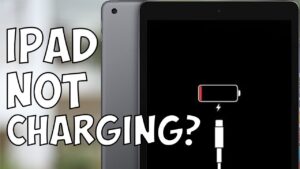Are you wondering what the lights mean on a battery charger? Don’t worry, we’ve got you covered! Understanding the indicators on your battery charger is key to ensuring optimal charging performance and prolonging the life of your batteries. In this article, we will walk you through the different lights you may encounter on a battery charger and what they signify. So, whether you’re a newbie or a seasoned user, read on to demystify the mysteries behind those blinking lights on your charger. Let’s dive right in!
What Do the Lights Mean on a Battery Charger?
If you’ve ever used a battery charger, you may have noticed different lights or indicators on the device. These lights provide valuable information about the charging process and can help you determine the status of your battery. Understanding what these lights mean is crucial in order to properly charge your battery and ensure its longevity. In this article, we will explore the different lights found on battery chargers and what they indicate. Let’s dive in!
1. Power Indicator
The power indicator light is typically the first light you’ll encounter on a battery charger. It simply shows whether the charger is receiving power or not. When the charger is plugged into an outlet and turned on, the power indicator light will illuminate, indicating that the charger is ready for use.
2. Charging Indicator
The charging indicator light is the most important light on a battery charger. It informs you about the progress of the charging process. Here are the common indications you may come across:
- Red or Flashing Red Light: This indicates that the battery is being charged. A solid red light usually means the battery is still in the initial charging phase, while a flashing red light may suggest a fast-charging mode.
- Green or Flashing Green Light: A solid green light indicates that the battery is fully charged and ready to use. On the other hand, a flashing green light may indicate a maintenance or trickle charging mode, where the charger keeps the battery at an optimal level.
- Amber or Orange Light: Some battery chargers use an amber or orange light to indicate that the battery is nearing a full charge. It serves as an intermediate stage between the initial charging phase and the fully charged state.
3. Fault Indicator
In some battery chargers, you might come across a fault indicator light. This light turns on when there is an issue with the charging process or the battery itself. Here are some common fault indicators you may encounter:
- Flashing Red or Amber Light: This light often indicates a problem with the battery, such as a faulty connection, a short circuit, or an incompatible battery. In such cases, you should double-check the battery and charger compatibility and ensure proper connections.
- Solid Red Light: A solid red light may suggest a more serious fault, such as an overheating battery or charger. In such situations, it is crucial to disconnect the charger and let it cool down before investigating further or seeking professional assistance.
- No Light: If the charger’s fault indicator light is off completely, it could mean a power supply issue. Check the power outlet, the charger’s power cord, and the connections to make sure everything is working correctly.
4. Mode Indicator
Some advanced battery chargers come with mode indicator lights that indicate the different charging modes available. These modes allow you to adapt the charging process to specific battery types or conditions. While the specific meanings vary between different models, here are a few examples of mode indicators you may encounter:
- Regular Mode: This mode is the standard charging mode for most batteries, offering a balance between charging speed and battery longevity.
- Fast Charging Mode: This mode is designed to charge the battery at a faster rate, trading off some battery life for a shorter charging time.
- Repair or Reconditioning Mode: Some chargers have a mode for reviving deeply discharged or sulfated batteries. This mode applies specialized charging techniques to restore the battery’s capacity.
- Maintenance or Trickle Charging Mode: This mode keeps the battery at a fully charged state while preventing overcharging. It is useful for long-term storage or maintaining batteries that are not in regular use.
5. Timer Indicator
Certain battery chargers also feature a timer indicator light that shows the remaining time for the charging process. This can be particularly helpful when you’re expecting the battery to be fully charged within a specific timeframe, allowing you to plan accordingly.
6. Additional Indicator Lights
Depending on the model and brand of the battery charger, you may come across additional indicator lights with different meanings. These lights can vary widely and may include:
- Temperature Indicator: Some chargers have lights that indicate the battery or charger temperature. This ensures safe charging by alerting you if the temperature exceeds normal limits.
- Error Indicator: An error indicator light may illuminate when the charger detects a problem, such as incorrect polarity or a damaged battery. It helps you identify and resolve the issue before proceeding with the charging process.
- Diagnostic Indicator: Certain chargers have diagnostic lights that display the battery’s condition or provide information about its health. These lights can help you assess the battery’s overall capacity and performance.
Understanding the lights on a battery charger is crucial for ensuring an effective and safe charging process. Each light serves a specific purpose, whether it indicates the power supply, charging progress, faults, modes, or timers. By paying attention to these lights, you can optimize your battery’s performance, extend its lifespan, and prevent potential issues. Remember to consult your battery charger’s user manual for detailed information about the specific lights and their meanings.
FAQs
- Can I charge a battery without indicator lights?
- What should I do if the fault indicator light is on?
- How long does it take to fully charge a battery?
- Can I leave the battery connected to the charger after it’s fully charged?
- Is it safe to use a battery charger overnight?
Frequently Asked Questions
What do the lights mean on a battery charger?
When using a battery charger, understanding the meaning of the lights can help ensure proper charging and prevent any potential issues. Here are some common questions regarding the lights on a battery charger:
What does a solid red light on a battery charger indicate?
A solid red light on a battery charger typically indicates that the charger is connected to the power source and is in standby mode. It means that the charger is ready to charge the battery.
What does a flashing red light on a battery charger mean?
A flashing red light on a battery charger usually signifies that there is an issue with the charging process. It could indicate a problem with the battery, such as low voltage or a faulty connection. It is advisable to refer to the charger’s manual to identify the specific issue associated with the flashing red light.
What does a solid green light on a battery charger mean?
A solid green light on a battery charger indicates that the battery is fully charged. It suggests that the charging process is complete, and the battery is ready for use.
What does a flashing green light on a battery charger indicate?
A flashing green light on a battery charger typically means that the battery is charging. The charger is providing a steady charge, and the green light may flash to indicate the ongoing process. Once the battery is fully charged, the green light may turn solid.
What does a combination of lights (red and green) on a battery charger mean?
A combination of red and green lights on a battery charger often indicates that the charger is in a maintenance or reconditioning mode. This mode helps optimize battery performance and extend its lifespan. The specific pattern and duration of the lights may vary depending on the charger model.
Final Thoughts
The lights on a battery charger are a crucial indicator of charging status and can help users understand the charging process. Typically, a battery charger will have different colored lights to signify various stages, such as charging, fully charged, and error conditions. Understanding these lights is important to ensure efficient and safe charging. The lights may vary depending on the charger model, so it’s essential to refer to the instruction manual for specific information. By paying attention to what the lights mean on a battery charger, users can easily determine the charging progress and ensure their batteries are appropriately charged.



